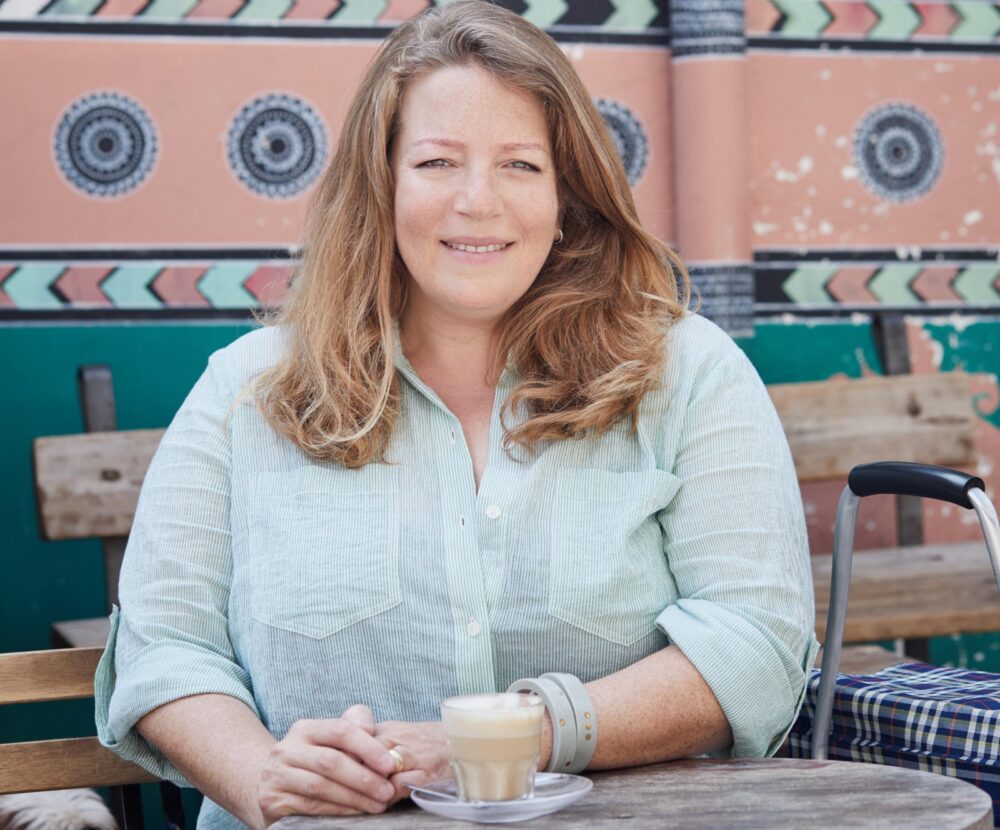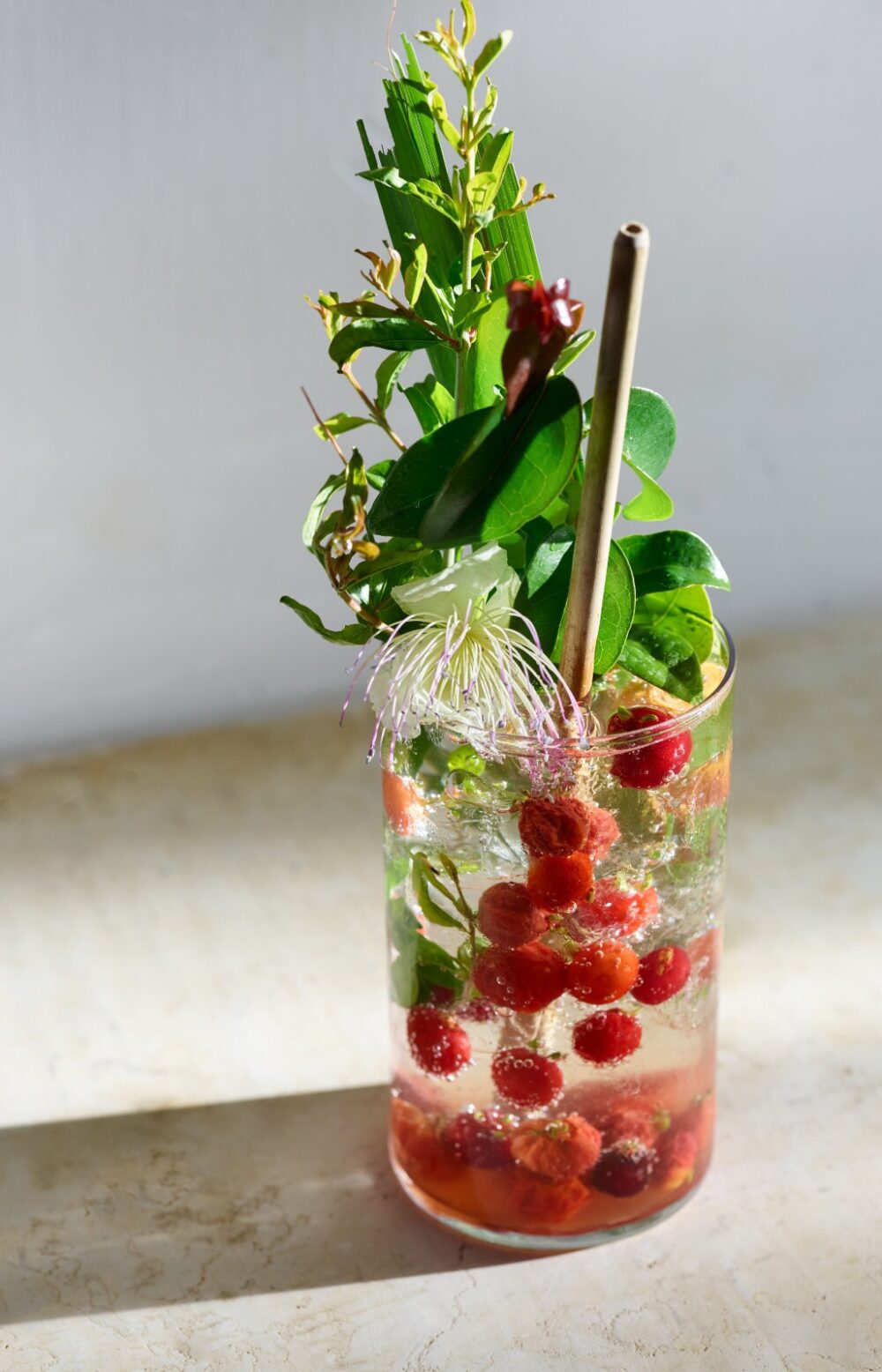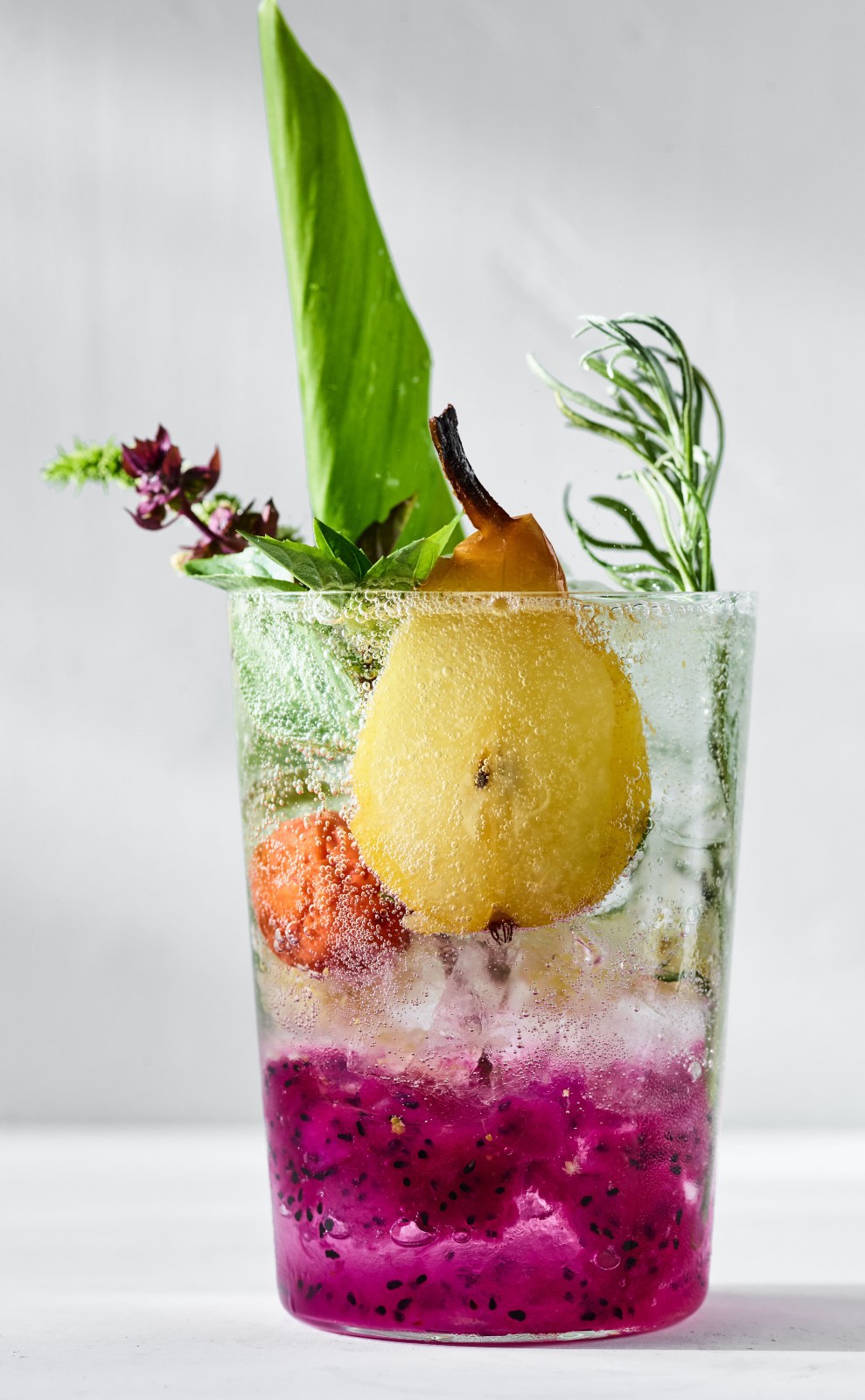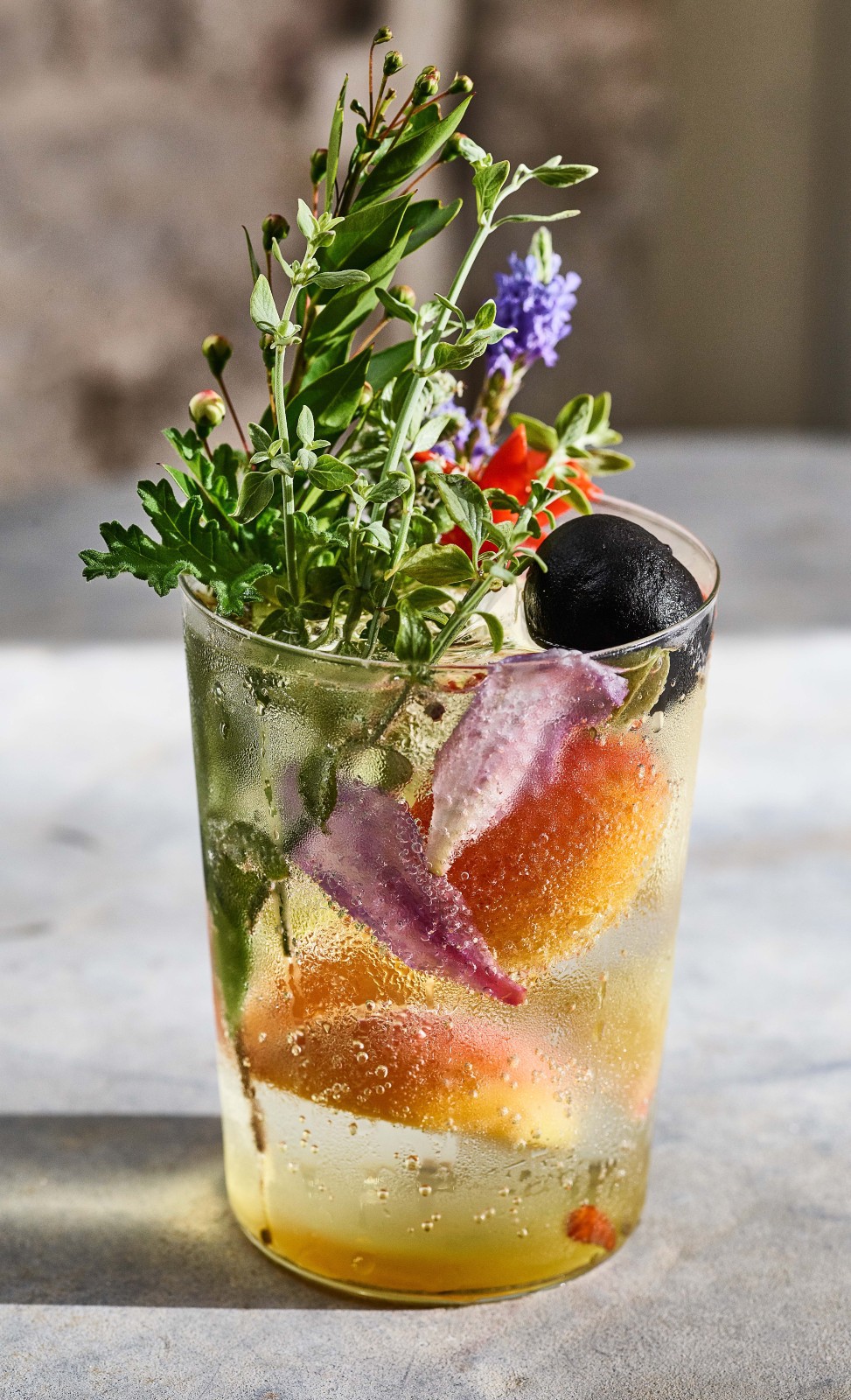And now anyone can create Tel Aviv-style gazoz at home, thanks to a gorgeous new book released June 1 from the Artisan Books imprint of Workman Publishing.
ADVERTISEMENT
Gazoz: The Art of Making Magical, Seasonal Sparkling Drinks was penned by Briga with fellow Tel Aviv resident Adeena Sussman, author of cookbooks including the acclaimed Sababa: Fresh, Sunny Flavors From My Israeli Kitchen.
“Fermented drinks like kombucha and kefir have ascended in popularity and so have ‘zero-proof’ cocktails as people are drinking less alcohol,” notes Sussman. “Benny was ahead of the curve.”
Lia Ronnen, publisher and editorial director at New York-based Artisan Books, visited Briga’s shop on a trip to her native Israel a few years ago. She was bowled over by his gazoz and proposed a cookbook.
“Lia asked me to think of people to work with and I knew Adeena would be amazing,” Briga tells ISRAEL21c.

ADVERTISEMENT
A native Californian, Sussman lives near the legendary Carmel Market, a 15-minute walk north of Levinsky Market and Café Levinsky 41. She often shared with social media followers her delight in Biga’s “fun, refreshing and celebratory” gazoz concoctions.
Sussman happily agreed to collaborate with “the Willy Wonka of gazoz” once she finished Sababa.
When Tel Aviv food photographer Dan Perez entered the picture, “the whole concept gelled,” says Sussman. “Benny and Dan are the creative geniuses and I’m the producer.”
Reinventing fountain soda
Gazoz resembles the soda fountain drinks popular in American drugstores in the 1920s through 1970s.
“Gazoz started concurrently with the kiosk culture of modern Tel Aviv, a city founded in 1909,” Sussman explains.

“The first kiosk on Rothschild Boulevard sold gazoz. It was a social drink, at that time a colored artificially sweetened syrup like kids’ bug juice.”
Celebrated by authors and poets of that time, gazoz gradually faded with the availability of bottled soft drinks. Its current iteration feeds off nostalgia and a rising appreciation for natural, artisanal food and beverages.
“People like Benny are reviving things that are so of this place and special to this place but taking them to a whole new level,” says Sussman.
Trained in cinema, Briga traveled the world after the army and then became a restaurateur in the artsy, historic Tel Aviv neighborhood of Neveh Tzedek.
About eight years ago, he and business partner Moshe Prizmant came across a small shop in Florentin’s Levinsky Market, famous for its spice merchants.
“I knew it would be a beautiful spot to be. We knew that was it,” he recalls.
Café Levinsky 41 was all about coffee and sandwiches. Freshly made soda water was available too. Sometimes customers would request gazoz or ask where they could buy this traditional drink .
When culinary tour guide Inbal Baum of Delicious Israel requested a gazoz for one of her clients, Briga fully realized the potential.

Soon he was biking around the city’s markets in search of natural ingredients for gazoz. He started experimenting with fermentation and foraging, favoring freestyle and seasonal mixtures.
“Step by step, the shop became super famous,” he says.
Café Levinsky 41 became a must-see on any tour of Florentin. Internationals moving into the gentrifying neighborhood couldn’t get enough of Levinsky Market and Briga’s gazoz.
When tourism was halted by the pandemic, Briga was afraid his business would suffer.
“But we became more connected as a community,” he says. “People from the neighborhood came and sat on the sidewalk with their gazoz and their coffee. We worked like crazy. Adeena and I were busy with the book and I also started bottling homemade liquors.”
Making gazoz your own
Briga says the book will show “how easy and super beautiful it is to make nonalcoholic, fermented, healthy drinks and enjoy them with friends and neighbors of all ages.”
Instructions are provided for fermenting and preparing the basics that you won’t find at your corner grocery. The ingredient list for the dragon fruit gazoz, for instance, includes fermented dragon (or kiwi) fruit and syrup, fermented pear slice and syrup, elderflower syrup, Thai basil leaves, turmeric leaves, mint sprig, fenugreek leaves and seltzer.
However, says Sussman, “Even if you don’t have access to herb gardens you can go to the corner bodega and buy an apple, a cinnamon stick and a bunch of mint and create a refreshing drink with the level of sweetness and fruitiness you prefer.”

Although no two gazoz concoctions are the same, Sussman highly recommends the “Milkshake,” a smooth vegan beverage made with nut-milk syrup cooked up from hazelnuts, sesame, peanuts and pistachios.
Other favorites are the tomato gazoz (“a nonalcoholic Bloody Mary”); stone-fruit gazoz in which the fermentation process intensifies the colors of the fruits; and vegetable gazoz that “feels like a virgin gin and tonic.”
Lately, Briga discovered that fermented loquat seeds yield an almondy flavor like marzipan or alcohol-free Amaretto.
“Though every glass of gazoz varies,” Briga relates in the book, certain elements remain constant. “No gazoz leaves my shop without a few slices of macerated fruit and its accompanying syrup at its base, along with a piece of sugar-preserved whole spice or hot chili, plus some fresh herbs and edible flowers.”
Gazoz will be available in his shop as well as on Amazon, Barnes & Noble and other online book sellers. Look for a schedule of virtual author tours on the café’s Facebook page.
















